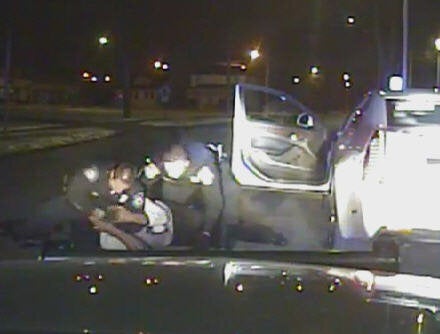Ontario Ombudsman André Marin, who is engaged in an investigation of use of force in the province, has in recent days been critical of Ottawa Police Chief Charles Bordeleau.
Marin has two main beefs: the first that Bordeleau hasn't shown much interest in engaging in talks about how police can best de-escalate potentially violent conflict with the public, and the second that the Ottawa Police Service has discontinued the use of cameras when using electroshock weapons such as Tasers.
With regard to de-escalation, both Bordeleau and the Ottawa Police Association President Matt Skof have said their service doesn't need to re-engage in talks about de-escalation because they talk about it all the time.
I first examined the idea of equipping beat cops with cameras nearly four years ago when six Liberal senators examined the state of the RCMP in a position paper called Toward a Red Serge Revival. I returned to the issue in August when the Ontario government announced that it will no longer restrict the use of Tasers to senior officers and special units. I have spent considerable time on the issue of Tasers and cameras since then, including lengthy face-to-face discussions with police chiefs and officers in Toronto, Calgary, Edmonton and Victoria -- I acknowledge that not all police services in Canada are agreed as to how best to combine the use of Tasers with cameras. That is up for debate, and there are a number of credible arguments being made as to when cameras need to be on, and when they needn't be.
What I have not heard is one credible argument for a Canadian police force turning its back on the use of cameras in potentially violent situations, including the use of Tasers.
There is plenty of evidence that Tasers have been improperly used by some police, most obviously in the death of Robert Dziekanski at Vancouver Airport. Both police and the public need all the help they can get in pre-empting these kinds of situations.
Cameras create a win-win situation for the public and for cops. A study done by an officer with the Rialto, California police department showed that in the year after body cameras were introduced the number of complaints against police officers in the city fell by 88 per cent.
On the other side of the coin, the use of force by officers fell by 59 per cent. "When you put a camera on a police officer, they tend to behave a little better, follow the rules a little better," says Rialto Police Chief William Farrar. "And if a citizen knows the officer is wearing a camera, chances are the citizen will behave a little better."
The bottom line is that an incredible number of citizens are pointing their own cameras at police during confrontations these days. Whose evidence does a responsible officer want? His or her own? Or somebody else's -- somebody who may have something other than the interests of justice in mind?
If Tasers are going to be in the hands of less experienced officers, I strongly suggest that three safeguards need to be attached to this relaxation of the rules.
First, ensure that Tasers may not be activated without audio-video accompaniment. There are lots of recording devices around -- some of which attach to Tasers and others that attach to officers' clothing. Various police forces are experimenting with them.
Condition two should be the establishment of training standards for all police forces operating in the province, including a requirement that officers using Tasers be recertified on an annual basis.
Tasers naturally scare some people, but if used properly they should be a great alternative to the use of guns. But nobody wants to see them used when gentler methods could win the day. Effective training will encourage non-violent settlement mechanisms. The more Ottawa police engage in discussions around this kind of de-escalation methodology -- including talks with Mr. Marin -- the better.
Condition three is simple. Purchasing up-to-date Tasers, cameras and more training will cost money, as will additional computer capacity so officers can return to their station and check what they see in their videos against what they see in their notes. However, other parts of the justice system will save money because there will be few complaints when everything has been recorded, and less court time. Those down-the-line savings should be paid up front to police forces, who are strapped for funds and are going to face increased immediate expenditures.
It is hard to convince governments to invest now to save later. But without that kind of investment, trigger-happy Tasering will continue the perception that these weapons are enemies of the public good. With that kind of investment, they could be good friends of the public and cops alike.
Colin Kenny is former chair of the Senate Committee on National Security and Defence. kennyco@sen.parl.gc.ca This op-ed originally appeared in the Ottawa Citizen, November 12, 2013.
